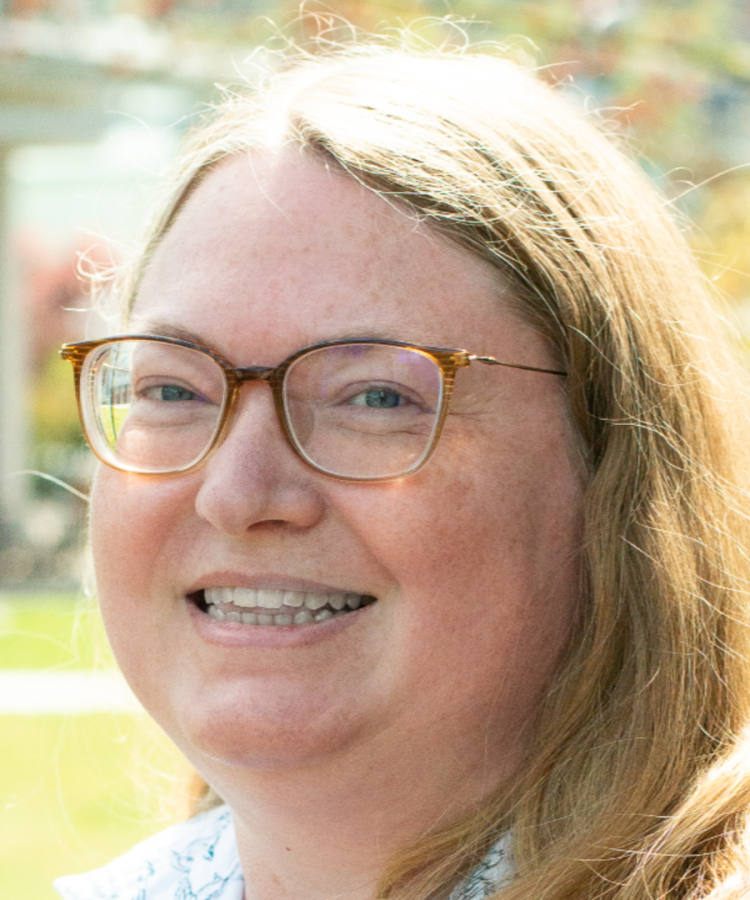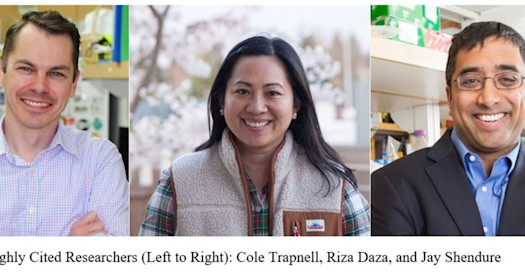
BBI: Can you tell us about your professional journey into the sciences and your research focus?
Dr. Dunham: My interest in science started young because I grew up in the woods and I spent a lot of time outside. In high school, I read a lot of science fiction and began reading about advances in genetics in the news. In college, I got involved in research as early as possible. College was an amazing time for me to try out new systems, and to see where I wanted my focus to be. My first job was feeding the fish in a zebrafish genetics lab. Later, I joined a cancer lab, and I spent a summer at Cold Spring Harbor working in a plant genetics lab.
After my time working in animal and plant labs, those complex life forms seemed very complicated to study. I realized yeast offers a simpler system you can do a lot with. At the time, there were new genomics tools being developed to manipulate genes in yeast that seemed pretty amazing. Yeast also divide rapidly, so you can do full evolutionary experiments with them. A major focus of my work has been genome evolution, and how genetic variation manifests in phenotype. The tools we use in my lab today are much more advanced than those I used in graduate school, but we are still doing evolutionary biology in yeast.
Along the way, I got interested in using yeast as a model for studying human genes too. Tools now exist for us to place human genes in yeast and ask many of the same questions about how genetic variation in genes affects expression and phenotype.
BBI: Out of curiosity, what about science fiction helped spur some of your own research interests?
Dr. Dunham: I have read some good science fiction and some very bad science fiction. Let’s just say they are not all good models for the next generation of scientists! But, writ large, science fiction is future-looking and creative. Creativity is an underappreciated quality in doing bench science. Often what we learn about science in high school seems drier. In reality, there is a lot of thinking outside of the box required to create good experiments in any scientific field.
BBI: Can you tell us about a recent project in yeast genomics?
Dr. Dunham: A postdoc in my lab, Renee Geck, has a cancer genetics background for her Ph.D. and decided to work with yeast for her postdoctoral work. We are interested in how genetic variation in pharmacogenes affects the ability to process certain drugs or affects optimal dosing of drugs. We are moving toward a future where knowing patients’ genotype could help avoid adverse drug reactions in the clinical setting. This idea has been entering clinical practice with varying success because there are so many rare alleles in the population with interactions that we don’t have enough information to classify.
One way that researchers have approached this problem is with mutational scanning, using yeast as a eukaryotic test tube to measure functionality of different variants in certain genes important in drug interactions. This particular project is in a well-known gene called Glucose-6-phosphate dehydrogenase or G6PD. This is a conserved enzyme that does the same reaction in a yeast cell that it does in the human body. If you are a human and inherit a loss-of-function mutation in this gene, your red blood cells can react very badly when you take certain medications or experience other oxidative stresses. It also has balancing selection, because having G6PD deficiency is shown to be protective against malaria. It is relatively common with higher incidence in areas of the world with high malaria rates.
If you knock out the G6PD gene in yeast, it will still grow, but it is very sensitive to certain stresses similar to its effect in humans. If you put the human G6PD gene into yeast after you have knocked out the analogous yeast gene, the human gene functions normally and rescues the yeast. This makes it a great experimental model for us. The eventual project will be to make every possible mutation in the human G6PD gene spliced into yeast, and ask which mutations are problematic and which are likely not pathogenic variants. In parallel, Gabe Boyle, a graduate student in Doug Fowler’s lab, is testing how all these mutations affect protein abundance in human cell culture, which will let us understand one aspect of why a particular genetic variant might not be functional.
For the first step in this project, Renee created a data set of known allele activity. She looked up every paper and database for G6PD alleles that weren’t yet annotated, and made a database of over 1000 alleles, hundreds of which had not yet been collected in the same place. This will be the basis for determining if the deep mutational scanning project works. It has been an amazing effort on the road to creating a useful data set that we foresee could one day be useful in the clinical setting. The final paper in the American Journal of Human Genetics is here.
BBI: Wow! Switching gears, could you tell us about your high school research outreach project?
Dr. Dunham: It has been really fun. We have high school students complete yeast evolution experiments in their classrooms, and then we do whole genome sequencing of their results and give them back their mutation results. They get to think about how their growth conditions selected for mutations that were beneficial for their yeast over time, and learn about evolutionary pressures in genomics. At the end of the experiment, we do “Yeast Madness” and set up a bracket. They compete their yeasts, and see which student team evolved the hardiest yeast. We have had particular success testing the strains against an over the counter antifungal.
It was a great way to teach science creatively, get students involved in actual bench research, and have a lot of fun. Not to mention, antifungal resistance is a growing problem. One of the student projects even found an anti-fungal resistance gene that had not yet been characterized in the literature!
During the pandemic, we were able to keep students involved in bench science by developing an “evolving@home” kit. Read more about here. We are actively looking for ways to keep funding for these types of programs that are such an important pipeline for getting students involved in research. You can read more about the yEvo high school curriculum here.
Check back in soon for more chats with BBI members from our partner institutions. Get an inside view into their work and where they think the field of precision medicine is heading next.


